Picture yourself witnessing one of nature’s most extraordinary partnerships unfold in the wilderness. When you observe wolves and ravens together, you’re seeing something far more sophisticated than simple scavenging. You’re watching a complex communication system that has evolved over thousands of years, creating what researchers describe as one of the most fascinating examples of interspecies cooperation in the animal kingdom.
This remarkable relationship extends far beyond basic survival needs. These two remarkable creatures have forged a unique symbiotic relationship that spans centuries. Today, researchers are uncovering the intricate signals, behaviors, and communication methods that make this partnership so successful. So let’s dive into the fascinating world of wolf-raven communication during hunts.
The Foundation of Their Partnership
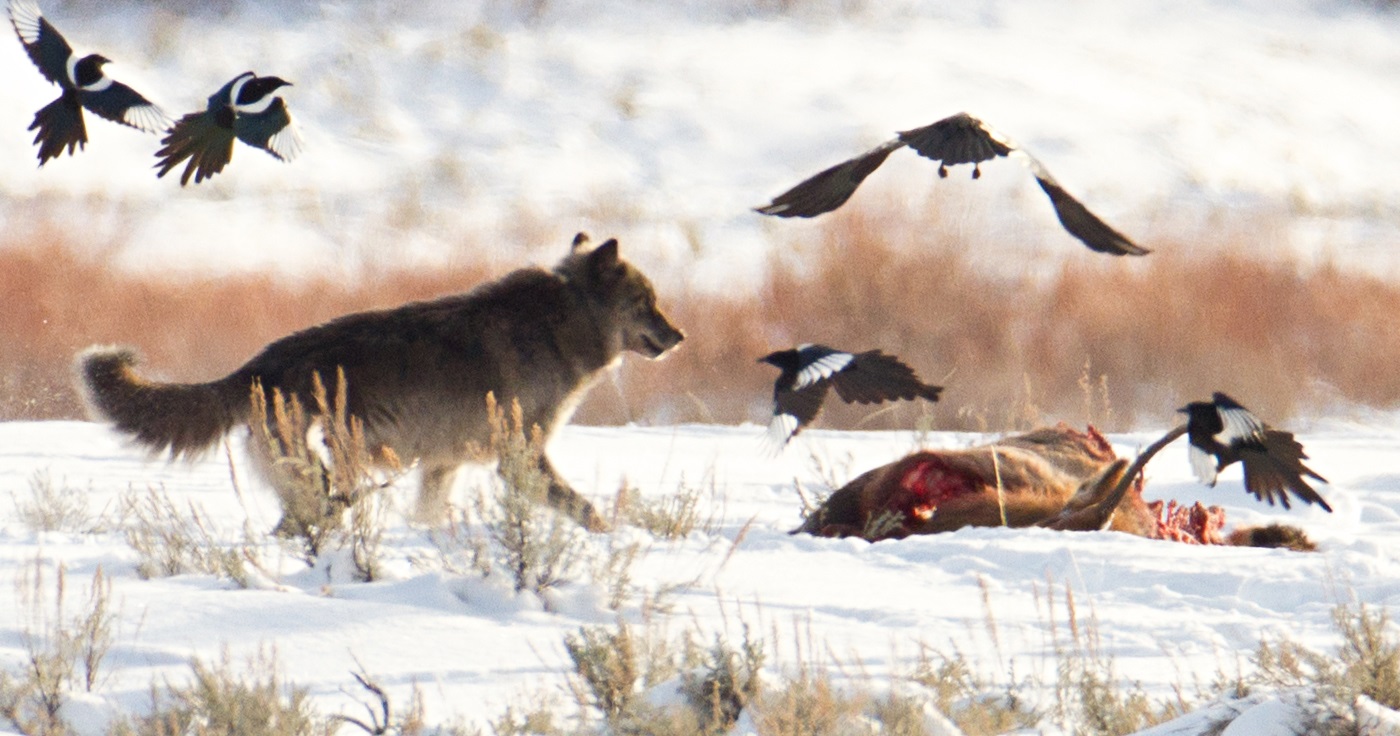
The relationship between wolves and ravens operates on a principle that benefits both species tremendously. Like some other species in nature, ravens and wolves can develop a symbiotic relationship, where species sometimes form unexpectedly close bonds to work for mutual benefit. This is the type of relationship observed between ravens and wolves.
The partnership between wolves and the common raven (Corvus corax) is based on the principle of mutual benefit, or symbiosis. As skilled predators, wolves leave remnants of their kills, creating an abundant food source for opportunistic ravens. Ravens, in return, provide services that enhance wolf hunting success in ways that continue to surprise researchers.
Ravens as Scouts and Early Warning Systems
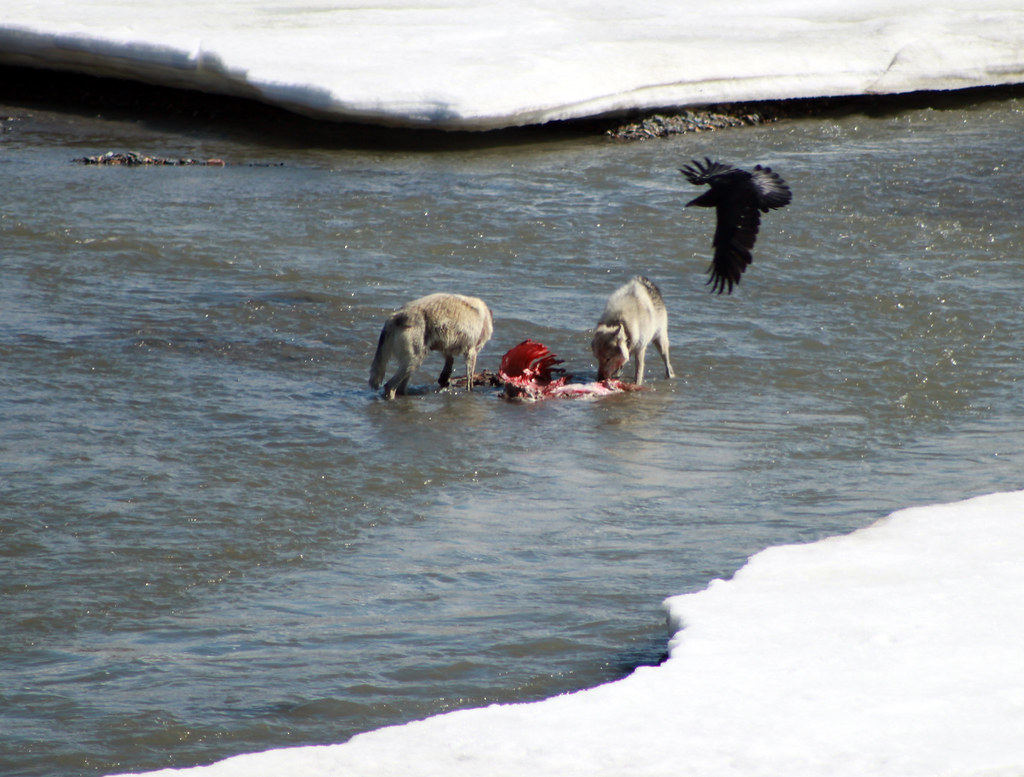
Ravens provide invaluable help to wolves by acting as scouts and messengers. Their aerial advantage gives them capabilities that ground-bound wolves simply cannot match. Their sharp eyesight and capacity to cover vast distances allow them to identify potential prey or threats. Through their vocalizations and actions, ravens notify the wolves of these findings, enabling the pack to enhance their hunting effectiveness and safeguard their territories.
What makes this scouting relationship even more remarkable is how ravens serve as a security system for wolves. Bernd Heinrich, author of Mind of the Raven: Investigations and Adventures with Wolf-Birds, records that ravens repay their wolf benefactors while at a kill site. Ravens are more suspicious and alert than wolves. Therefore, they serve the wolves as extra eyes and ears, warning them of unwanted visitors approaching the site.
Vocal Communication Between Species
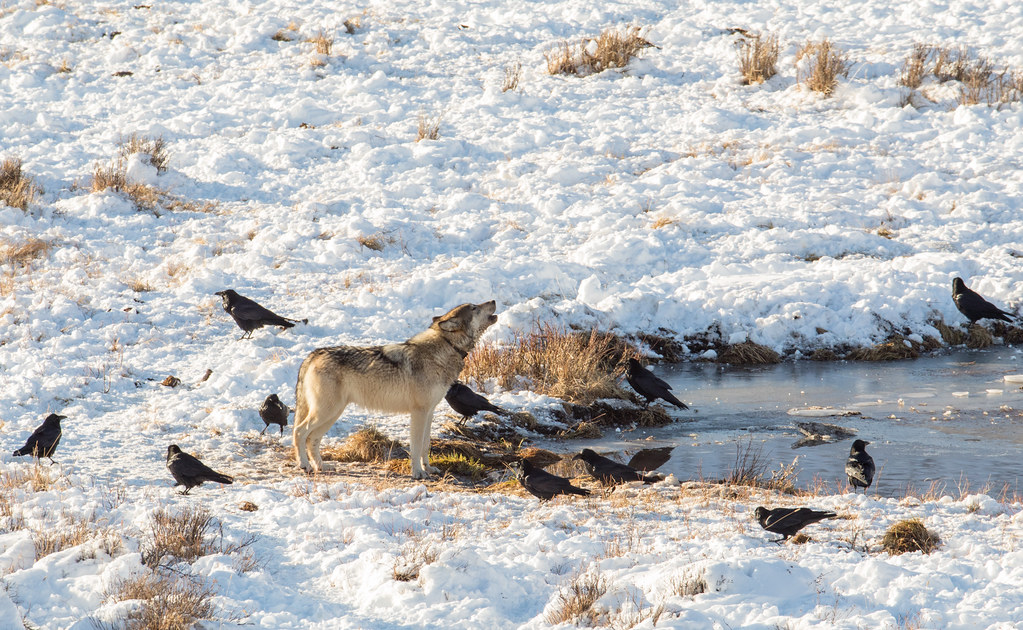
The vocal exchanges between wolves and ravens represent one of nature’s most intriguing cross-species communication systems. The communication between wolves and ravens is intricate and captivating. Ravens employ a diverse range of vocalizations and non-verbal signals to convey information to the wolves, including details about prey location or the presence of intruders.
Emitting distinctive calls, they signal the presence of a carcass, capturing the attention of nearby wolves. Wolves have learned to interpret these calls, responding to ravens when they hear specific vocalizations. Wolves react to the calls of ravens and comprehend their importance. Observations by researchers reveal wolves looking skyward when ravens call, actively acknowledging their avian companions.
Staging Behavior and Leading Techniques
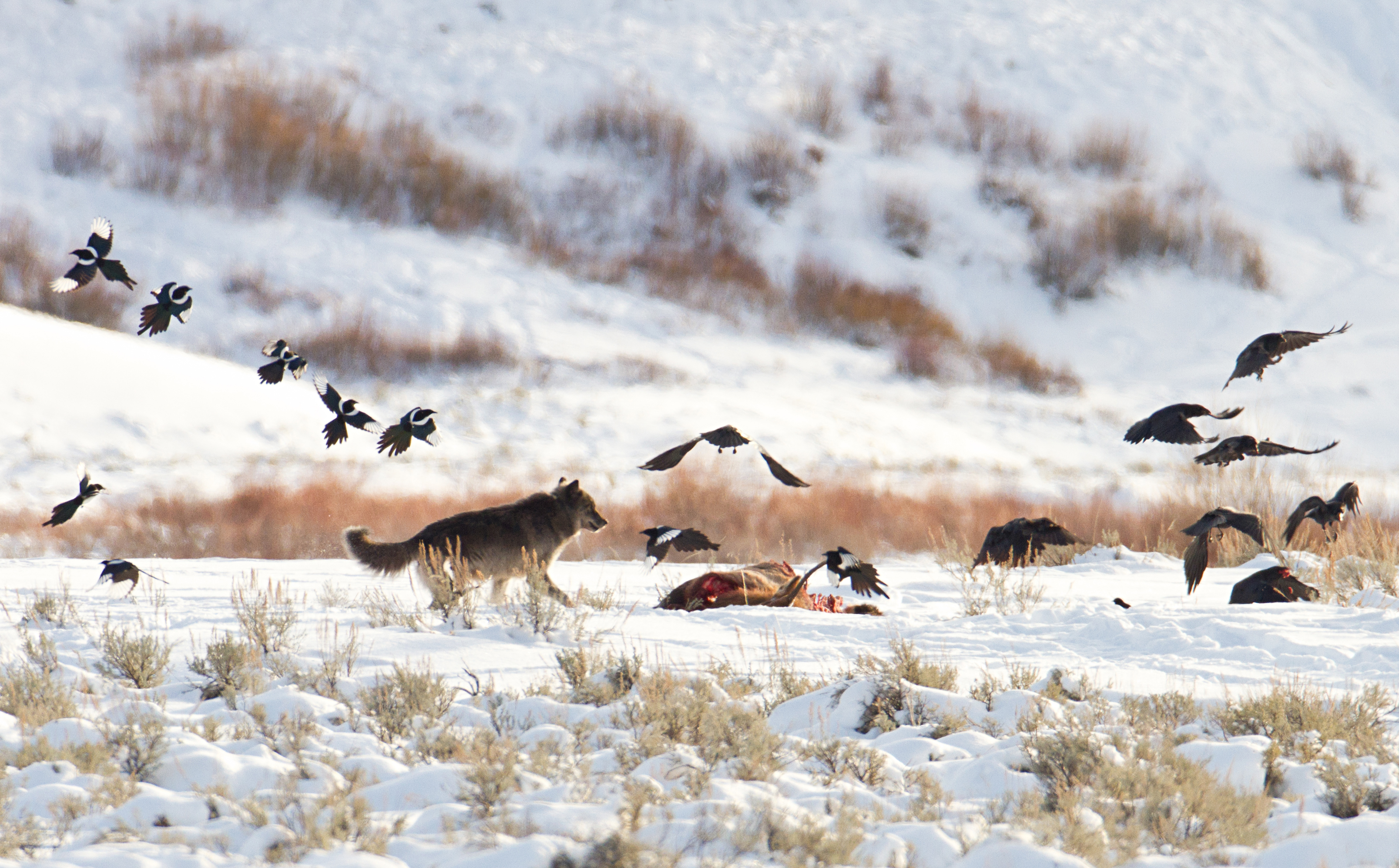
One of the most fascinating aspects of raven communication involves what scientists call “staging behavior.” Ravens exhibit ‘staging behavior’ by hopping or flying a brief distance ahead of wolves, enticing them to follow and guiding them to potential hunting grounds. This behavior demonstrates remarkable intelligence and intentional communication.
Ravens don’t just wait for opportunities to arise. Ravens will often circle the sky above injured, young, or sick animals like elk and deer, and wolves have been observed taking this behavior as a cue for a hunt. It’s believed that sometimes wolves will even follow ravens’ calls, as they make loud excited noises when they find a carcass. Ravens have even been observed leading wolves to carcasses that they cannot tear into on their own.
Tactical Foraging During Active Hunts

Ravens don’t simply wait for wolves to make kills, they actively participate in the hunting process itself. Ravens actively participate in the hunting process through a behavior known as tactical foraging. They trail hunting wolves, anticipating the flushing out of small mammals from hiding spots. Subsequently, ravens either seize the fleeing prey or attract the wolves’ attention, guiding them towards potential targets.
This tactical involvement creates a dynamic hunting partnership. Ravens actively take part in the hunting process by engaging in what scientists call tactical foraging. They follow hunting wolves, waiting for them to flush out small mammals from hiding spots. Ravens then swoop down to catch these fleeing prey or grab the wolves’ attention, guiding them toward potential targets. This strategic hunting behavior benefits both species, increasing their chances of a successful hunt.
Recognition of Wolf Hunting Signals
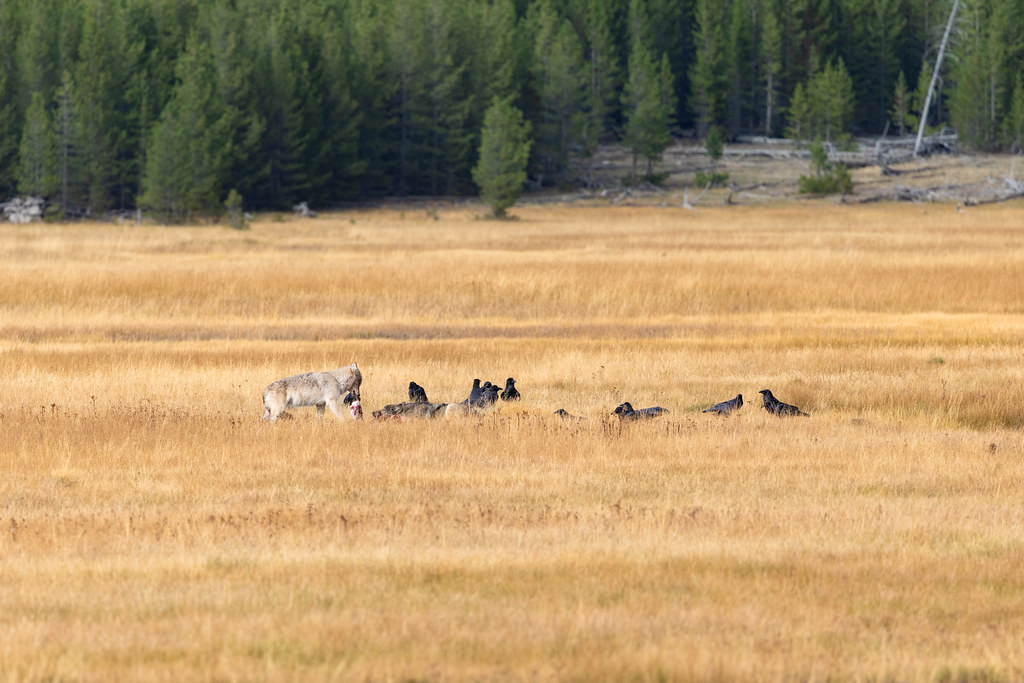
Ravens have developed the ability to recognize specific wolf behaviors that indicate hunting opportunities. The ravens stay close, recognize a wolf’s hunting cry, and follow the hunt from above. This recognition goes beyond simple opportunism, showing genuine understanding of wolf behavior patterns.
Wolves traveling, resting, and hunting away from a carcass all attracted ravens more than coyotes engaged in these same activities. This selective attention suggests ravens have developed specific recognition abilities that allow them to distinguish wolves from other predators and understand their behavioral cues more effectively.
Physical Communication and Body Language

Communication between wolves and ravens extends far beyond vocalizations to include sophisticated body language and physical interactions. Ravens use their remarkable flight abilities to convey information through movement patterns and positioning. Their aerial displays often serve as signals to wolves about potential opportunities or threats in the surrounding area.
Physical play between the species also serves a communicative function. Ravens have often been seen interacting with wolves, especially pups and yearlings. These intriguing birds have been known to grab sticks and play tug-of-war with wolf puppies, to fly over young wolves with sticks and tease the small canines into jumping up to grab the sticks, and even to boldly pull the tails of wolves to initiate a reaction. These playful interactions help establish and maintain the cooperative relationship between the species.
Timing and Coordination of Signals
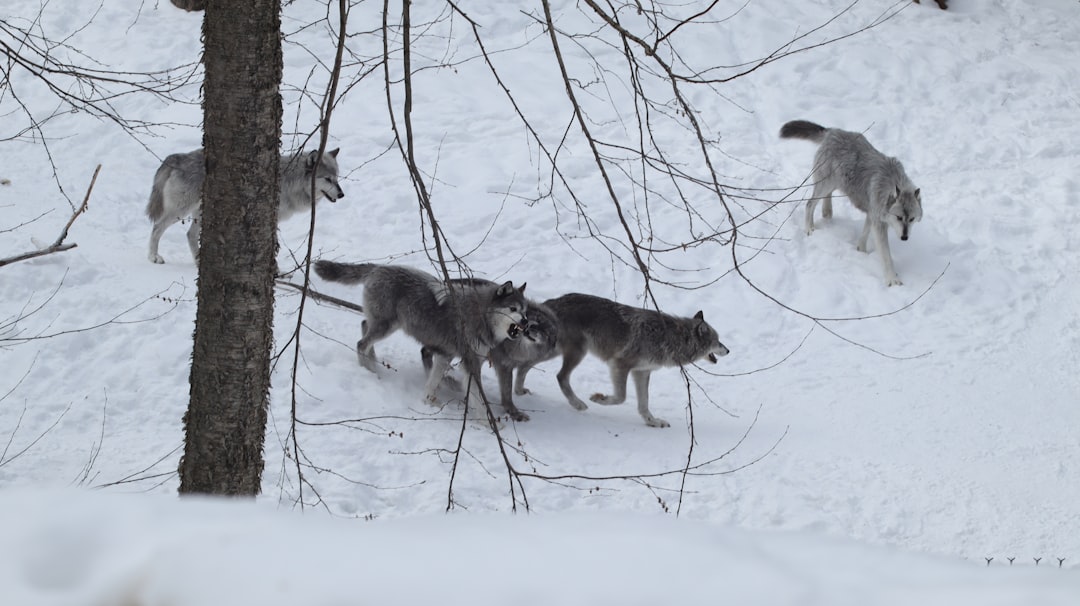
The timing of raven communications appears highly coordinated with wolf hunting patterns. Ravens begin eating carrion quickly, usually arriving not soon after a kill, but rather – because of their close association with wolves – being there when the kill is made. This presence during the actual hunt indicates sophisticated timing and awareness of wolf behavior.
Ravens demonstrate remarkable understanding of when to communicate and when to remain silent during hunts. They seem to know when their vocalizations might alert prey and when their calls can be most helpful to their wolf partners. This timing suggests an evolved understanding of hunting dynamics that benefits both species in their cooperative endeavors.
Information Sharing About Prey Conditions
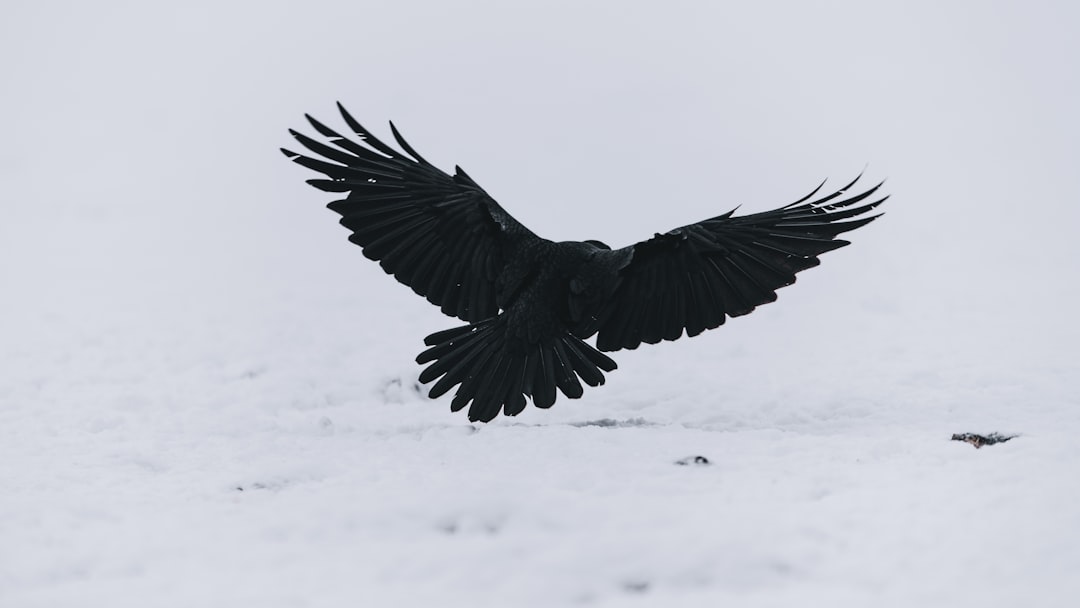
Ravens excel at gathering and sharing information about prey conditions with their wolf partners. Their aerial perspective gives them unique insights into prey health, location, and vulnerability that wolves cannot access from ground level. When ravens circle above sick, injured, or isolated animals, they effectively communicate this valuable intelligence to nearby wolf packs.
This information sharing goes beyond simple location data. Ravens appear to communicate the condition and accessibility of potential prey through their behavior patterns, call intensity, and persistence in particular areas. It is thought that wolves may be able to interpret the calls made by ravens indicating the location of their next meal, formalizing in the process this incredible mutualistic relationship. Wolves have learned to read these signals and respond appropriately to different types of raven communications.
How Pack Dynamics Influence Communication
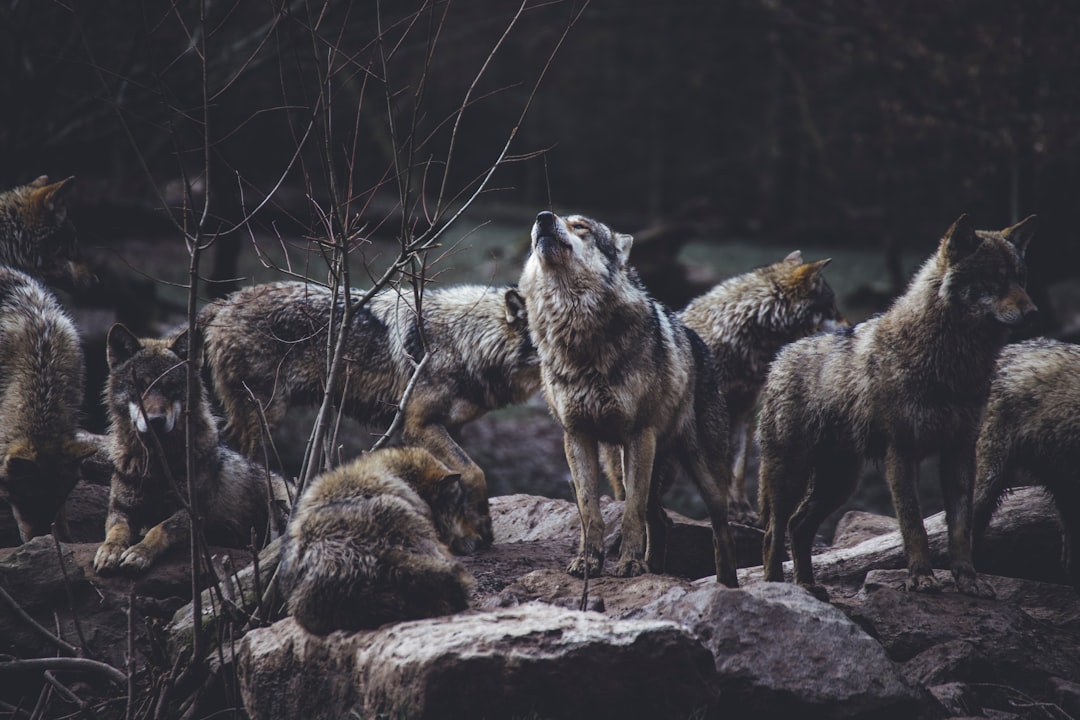
The presence of ravens has actually influenced wolf pack formation and hunting strategies. Given that ravens swiftly consume a substantial portion, up to 40 percent or more, of the carcass, two wolves cannot compete with their speed in claiming the food. As a solution, wolves opt to live and feed in packs, ensuring they can secure more food from a carcass, and individual wolves are not burdened with hunting every time. This way, the task of hunting can be distributed among the members of the pack.
We also present an analysis that incorporates a previously ignored feature of wolf foraging ecology, namely the loss of food to scavenging ravens, Corvus corax. By accounting for this process, we show that individuals in large packs do indeed accrue foraging advantages. This mutual influence demonstrates how deeply intertwined these two species have become through their communication and cooperative relationships.
Conclusion

The communication system between wolves and ravens during hunts represents one of nature’s most sophisticated examples of interspecies cooperation. Through vocalizations, staging behaviors, tactical foraging, and complex timing, these two species have developed a partnership that enhances survival for both. Their relationship goes beyond simple scavenging to include active hunting collaboration, information sharing, and mutual recognition systems that have evolved over thousands of years.
This extraordinary partnership reminds us that nature’s most successful relationships often emerge from unexpected places. The next time you see ravens circling overhead or hear their distinctive calls, remember that you might be witnessing part of an ancient conversation between two of nature’s most intelligent species. What other hidden communications might be happening right under our noses in the natural world?




